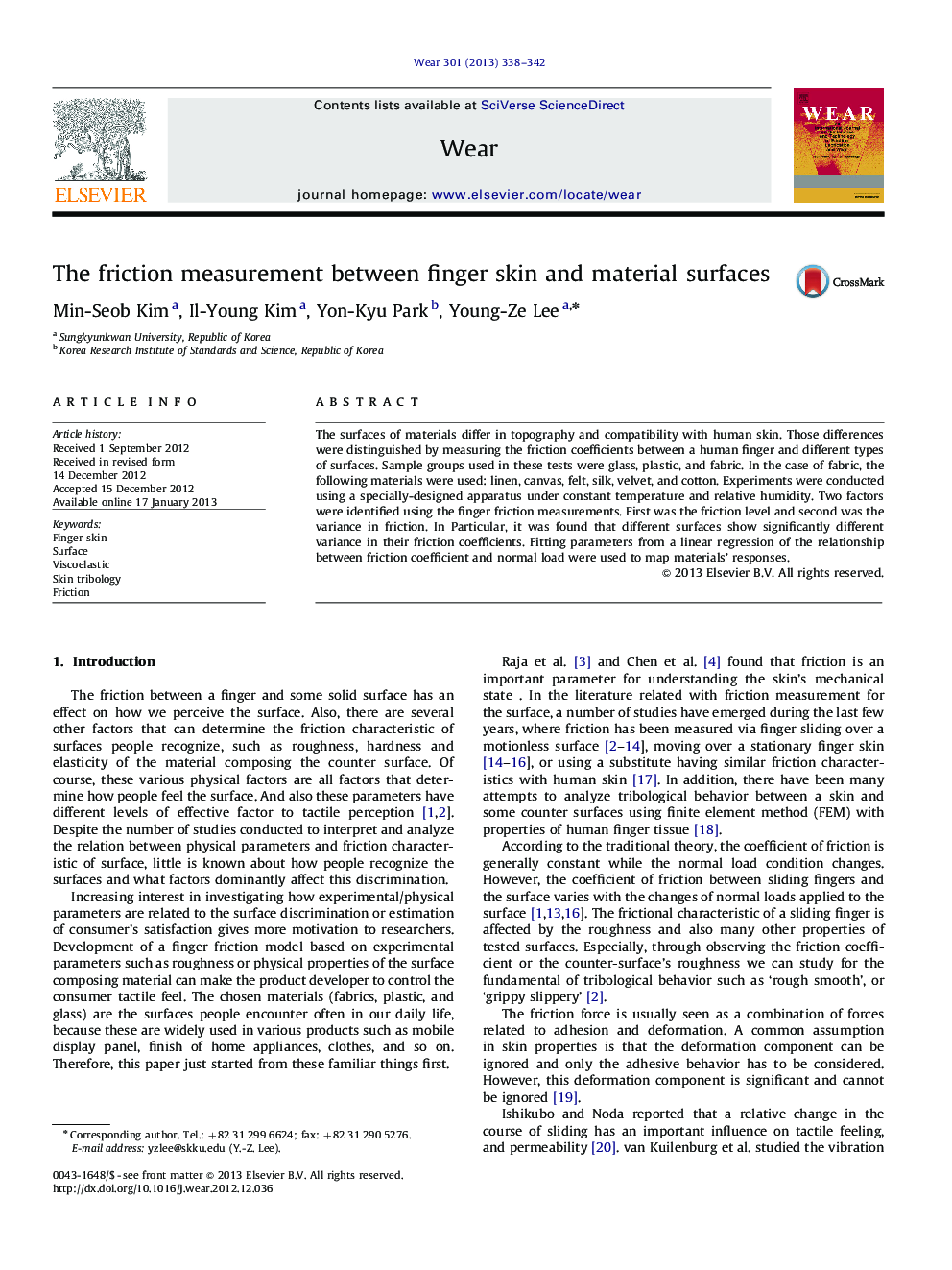| Article ID | Journal | Published Year | Pages | File Type |
|---|---|---|---|---|
| 617540 | Wear | 2013 | 5 Pages |
The surfaces of materials differ in topography and compatibility with human skin. Those differences were distinguished by measuring the friction coefficients between a human finger and different types of surfaces. Sample groups used in these tests were glass, plastic, and fabric. In the case of fabric, the following materials were used: linen, canvas, felt, silk, velvet, and cotton. Experiments were conducted using a specially-designed apparatus under constant temperature and relative humidity. Two factors were identified using the finger friction measurements. First was the friction level and second was the variance in friction. In Particular, it was found that different surfaces show significantly different variance in their friction coefficients. Fitting parameters from a linear regression of the relationship between friction coefficient and normal load were used to map materials' responses.
